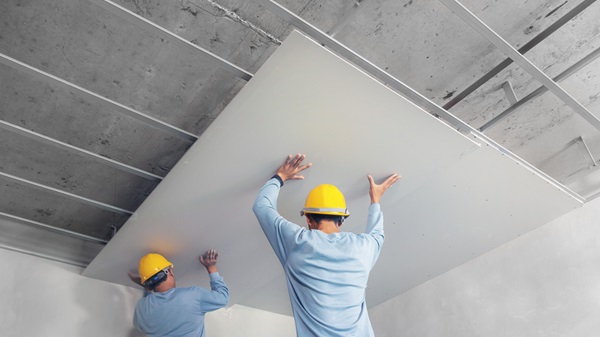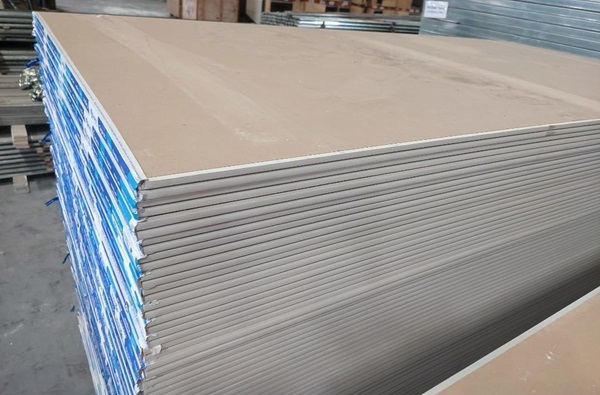Advantages and Disadvantages of Drywall
In recent decades, drywall has become an integral component of the construction industry. First introduced in the early 20th century, it is now recognized worldwide as a cost-effective and efficient solution for wall partitioning and false ceilings. However, like any material, drywall has its own set of advantages and disadvantages that influence its selection for various projects.

Advantages of Drywall:
Ease and Speed of Installation
One of the most notable features of drywall is its ease and speed of installation compared to traditional methods such as mortar and brick, requiring less time and labor. This feature is particularly valuable in projects with time constraints or limited budgets.
Design Flexibility
Drywall allows for the execution of modern and creative designs. It can be used to create various arches, curved shapes, and other architectural elements, which are not possible or are extremely difficult with traditional materials.
Cost-Effectiveness
Economically, drywall is a cost-effective option. The cost of production, transportation, and installation is relatively low. Additionally, the maintenance and potential repairs of drywall are simpler and cheaper than many other materials.
Sound and Thermal Insulation
Drywall acts as a sound and thermal insulator, contributing to increased comfort and reduced energy costs in buildings.
Fire Resistance
Drywall possesses natural fire-resistant properties. Special fire-resistant drywall sheets can effectively delay the spread of fire in buildings, significantly increasing safety.
Reduced Energy Costs
Using drywall, especially in insulation systems, can lead to significant reductions in heating and cooling costs. Insulating materials sometimes combined with drywall can prevent energy loss, contributing to environmental conservation and energy sustainability.
Improved Indoor Air Quality
Some types of drywall are designed to help improve indoor air quality. These drywall sheets contain materials that can absorb air pollutants, reducing health risks.

Disadvantages of Drywall:
Moisture Sensitivity
One of the main drawbacks of drywall is its sensitivity to moisture. If exposed to damp environments without proper protective coating, drywall can be damaged or even develop mold.
Impact Vulnerability
Drywall is vulnerable to hard impacts. Heavy objects or high pressure can cause cracks or breakage.
Load-Bearing Limitations
Drywall is not designed to bear heavy loads. Therefore, installing heavy items like wall-mounted TVs or bookshelves requires reinforcement.
Outdoor Use Limitations
Another limitation of drywall is its unsuitability for outdoor use. Direct exposure to weather elements like rain and sunlight can quickly damage drywall and reduce its lifespan.
Recycling Challenges
Although drywall is recyclable, the recycling process can be complex and costly, particularly in places without access to appropriate recycling facilities.

Tips for Selecting and Purchasing Drywall:
When choosing drywall, consider the installation environment and specific project conditions. Moisture and fire-resistant drywall are more suitable for specific environments. Also, comparing prices and checking the seller's warranties can aid in making a better choice.
How to Repair and Maintain Drywall:
Repairing scratches or small holes is simple using filler materials. For more extensive damage, replacing a section of the sheet may be necessary. Proper maintenance and avoiding direct contact with water can extend the lifespan of drywall.
Using Drywall in Sustainable Design:
Drywall plays a significant role in sustainable building projects. It can be used in combination with recycled materials or renewable resources to minimize environmental impacts.
Innovations in Drywall Production:
Technological advancements in drywall production, such as the use of new additives to increase resistance to moisture and fire, provide new opportunities to improve performance and application.
Highlighted Projects Using Drywall:
This section could explore several case studies of building projects that have achieved notable success in design, execution, and efficiency using creative applications of drywall. This helps readers gain new ideas for their projects.
Impact of Drywall on Health and Safety:
Enhancing Indoor Health
Using drywall in buildings not only serves as a structural element but can also positively affect indoor air quality and, consequently, residents' health. Specific types of drywall designed to improve air quality can absorb pollutants like formaldehyde, especially beneficial in enclosed spaces with inadequate ventilation, reducing health risks associated with indoor air pollution.
Increasing Building Safety
Drywall, especially fire-resistant varieties, plays a crucial role in enhancing building safety. These sheets can help slow the spread of fire, providing more time for safe evacuation and emergency response. Additionally, drywall's insulating properties minimize heat transfer, preventing fire from spreading to other parts of the building.
Innovations in the Drywall Industry:
Sustainable Development and Green Innovations
As part of efforts to achieve sustainability goals, the drywall industry witnesses innovations aimed at reducing environmental impacts. For example, manufacturers seek ways to recycle drywall from construction projects and reuse it in new production. This approach not only reduces waste but also conserves resources.
New Technologies in Production and Installation
New technologies in drywall production include using new additives to enhance durability and resistance to environmental factors like moisture and fire. Furthermore, advancements in installation methods, including automatic and semi-automatic tools, make installation faster and more efficient. These developments not only improve construction quality but also ensure worker safety during installation.

Conclusion:
Due to its light weight, easy installation, affordable price, and design flexibility, drywall is a popular choice in the construction industry. However, considering its disadvantages such as moisture sensitivity and impact vulnerability is essential. By correctly choosing the type of drywall and adhering to maintenance tips, one can benefit from its advantages while minimizing its negative effects.
You can purchase various types of drywall in the best quality and at the most suitable prices from the Bana collection.